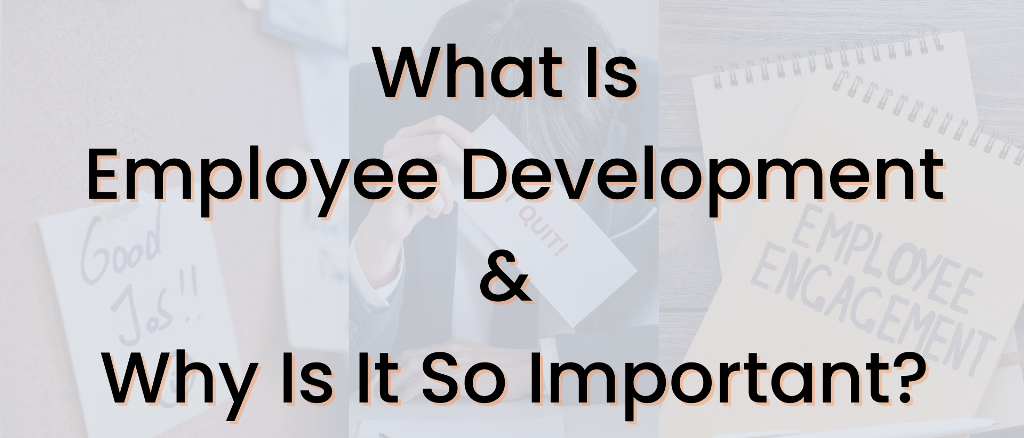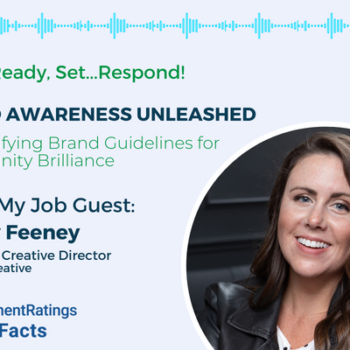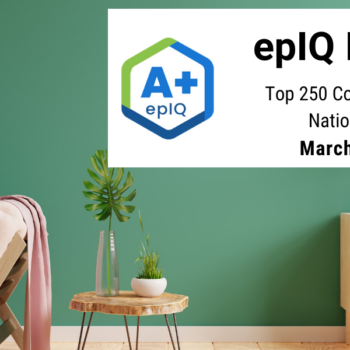
A strong Employee Learning and Development Program is a staple in every industry. With the growing shift in employees seizing new opportunities and aligning themselves with companies that meet their needs; including a positive company culture, possibility for growth, and a focus on work-life balance, employee learning and development is more crucial than ever.
A recent SatisFacts employee satisfaction survey found that 2 of the Top 3 Employee Motivators revolve around learning and development. Employees want to learn and want to grow. The SatisFacts employee survey found that the number 1 motivator for employees in multifamily is the opportunity to learn new things. The second motivator, with an importance level of 4.47, is advancement opportunities.
This month, the SatisFacts education team hosted their monthly multifamily webinar on the topic of Employee Learning & Development. The two expert panelists that presented during the webinar are both leaders of the learning & development programs in their companies: Genn Calise, Director of Learning & Development with Scully Company and Michelle Wood, Director of Learning & Engagement with Atlantic Pacific Companies.
The webinar provided so many examples of how to structure an employee development program to align with the varying needs of different learner personas, as well as some eye-opening statistics on the importance of having a comprehensive training program in your organization. We’ve narrowed down the list to 5 key suggestions mentioned by Genn and Michelle during the webinar; however, we strongly encourage you to watch the entire webinar (skip to 5:30 to get straight to the info) to hear all of the details.
- Be flexible in your learning modalities. As Michelle mentioned, not everyone learns in the same way or at the same pace. Genn provided a great example of the multi-channel training program types used at Scully:
- On demand training
- Instructor led training
- On the job training
- Consistent coaching with candid feedback
- Utilize “just in time” training. This means providing training as it’s needed to use that skill, rather than too far in advance when it’s not yet neeed and won’t be remembered or too late to be useful. Genn provided a great example of how fair housing can be taught with the “just in time” method.
- Define It – A Fair Housing Overview that is short and provides just the information needed for a new hire at the very beginning of their employee journey
- Debate It – A Fair Housing Workshop during new hire training with discussions and opportunities to practice and role-play.
- Develop It – On The Job Training with a trusted mentor or supervisor.
- Discuss It – Provide feedback, answer questions, and make sure employees feel secure in fair housing laws and discussions.
- Build learner personas for your organization’s employees. Michelle highlighted how AP created persona templates in order to build a more structured learning program that identifies learner segments and customizes training based on the different personas throughout their organization. She suggested interviewing your employees (not everyone, but enough to represent a range) to be able to identify a middle range for each learner persona. The persona template details could include:
- Demographics
- Education
- Psychometric (how they prefer to learn, what motivates them, what are their values)
- Pain points
- Offer consistent coaching/mentoring. Michelle and Genn both identified mentor programs as a crucial element to their learning and development program. Both experts also mentioned the value of providing both positive and negative feedback. Genn provided the suggestion of “75% of the time, catch someone doing something right.” Employees will be more likely to feel you genuinely care and be receptive to your feedback when you are recognizing their achievements and efforts to learn and grow more often than providing negative critiques. Several important tips shared by Genn and Michelle regarding coaching/mentoring include:
- Give timely feedback – don’t wait until the employee has completed an entire project to go back and critique certain things. Stop them in the moment to reinforce and redirect.
- Observe in-person when possible, rather than using third party feedback.
- Provide 1:1 mentoring – encourage managers to learn about their employees and communicate with them to have meaningful one-on-one conversations.
- Build relationships with your employees. Don’t make it all about work; learn about them as people, build rapport, and work to earn their trust and feel secure in the feedback they are receiving as well as in sharing their own feedback in return.
- Incorporate AI to create a more user-centric experience. Gather and process user specific data to augment the user experience. Michelle described the perfect example: Netflix uses you past viewed shows to recommend new suggestions to watch. A similar experience can be applied to using data to analuze and adapt each user’s learning experience to customize and drive the value of training.
Having a comprehensive, structured employee development program brings numerous benefits to an organization. Below are a few that were highlighted in the webinar:
- Companies with engaged employees outperform companies without by up to 202%. – Dale Carnegie Study
- Companies that offer a comprehensive training program have 218% higher income per employee than those without formalized training. – Association for Talent Development (ATD)
- Companies with a comprehensive training program have a 24% higher profit margin than those who spend less on training. – ATD
Do you need a comprehensive survey provider to help you kick start your employee engagement and development program and/or to help ensure you’re on track with your current program?
In addition to our resident, flexible and employee survey programs, we have an expert education team to help you with strategies and resources along your employee development journey. Let’s get started!



